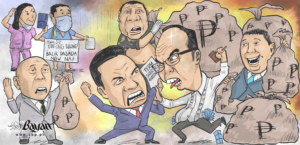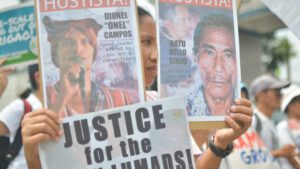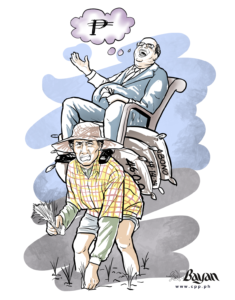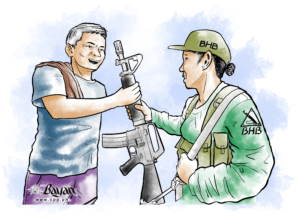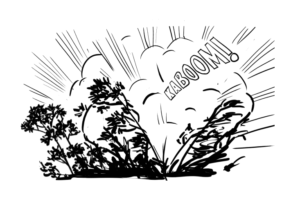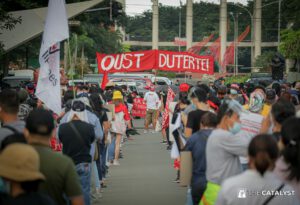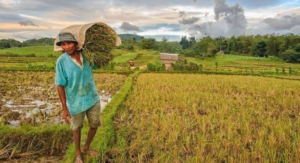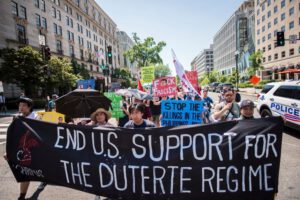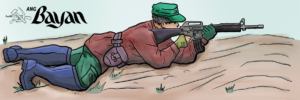Mega farms: Land consolidation for export production

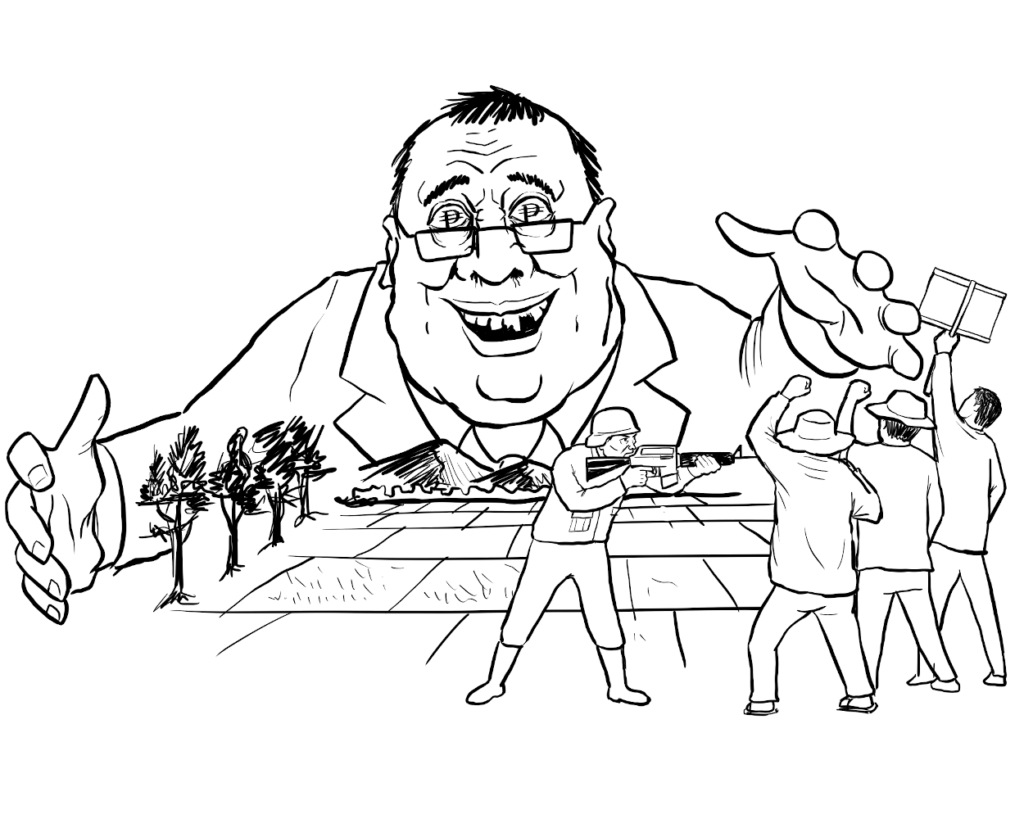
The Duterte regime is putting forward various schemes purportedly to stimulate the agricultural sector. These include the Mega Farm and Food Security Program is touted to ensure food security during the pandemic.
The program aims to consolidate parcels of land tilled by individual farmers into mega farms which will specialize in producing certain crops for particular areas in the country supposedly to achieve economies of scale. The program is set to cover 217,120 hectares of public land.
Contrary to its name, the program will not ensure food security. The megafarms that will be set up are actually commercial plantations that will specialize on high value crops like bananas, cacao, cassava, coffee, oil palm, citrus, coconut, mango, onion, rice, seaweed, sugarcane and temperate vegetables. These crops are highly dependent on seeds, pesticides and fertilizers imported from capitalist countries.
Rice fields that have been rendered unproductive by rice liberalization will be covered by this program. Last August, the Asian Development Bank approved a $400-million (₱20-billion) loan program supposedly to help displaced rice farmers. A portion of funds will be allocated to subsidize farmers in “transitioning” to planting high value crops. The regime implemented this loan program despite the need to ensure adequate local rice supplies after Vietnam and Thailand temporarily suspended rice exports to the Philippines in May.
Time and again, land consolidation for exportcrop production has been proven to pave the way for the reconcentration of land into the hands of landlords to the detriment of farmers. In Negros and Central Luzon, this is being implemented through sugar block farming. In Mindanao, this takes the form of agribusiness venture arrangements (AVAs) between agrarian beneficiaries and companies operating commercial banana, pineapple, cacao and oil palm plantations.
Under these schemes, landlords and big agricultural firms are not only able to exploit large tracts of land and resources but also the cheap labor of farmers. These arrangements subsume thousands of hectares of land for export production.
Last June, the World Bank admitted the “limitations” of sugar block farming and AVAs. In Negros, productivity in sugar block farms remained almost stagnant, backward, unmechanized and reliant on the labor of thousands of sacadas. Despite the almost P2-billon funding for the industry in the form of loans and aid for machinery and infrastructure, the average output recorded was just 50-57 tons per hectare which way below the target 80-100 tons. According to the Unyon ng mga Manggagawa sa Agrikultura, these funds only further fattened the wallets of landlords, state and local offiicials.
Many farmers continue to work as farm workers in their own lands while receiving extremely low rent from from agribusiness firms and landlords. In Tarlac, farmers are paid only P7,500 per 0.66 hectare of land per year, and receive measly wages as farm workers. Worse, farmers also lose their right to plant food crops to tide them over during non-harvest seasons.
In banana plantations in Mindanao, farmers are deep in debt to their “business partners” who exclusively supply them with production materials (seed, pesticide and fertilizers.) The farmers shoulder all costs of production and are obligated to pay even in times of calamities, drought or pestilence. They are bound by exploitative sale agreements wherein their products are bought at extremely low prices. Because of indebtedness, farmers are being displaced from their lands by their “partners” in the name of these AVAs.

